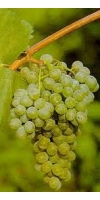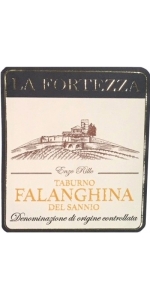Falanghina

Falanghina- Originally harvested in Greece, Falanghina is a white grape varietal with roots firmly grounded in the Ancient Italian culture. Falanghina is the grape behind the ancient Roman wine, Falerian, a gift from the god Bacchus. Falanghina has been researched extensively because of this and a movement to reestablish the high status of the grape is in progress. Falanghina is mainly grown in the Southern Italian region of Campania. There are a few other areas in Italy such as Puglia and Abruzzo but has not been produced internationally. There is, however, the possibility as the grape as becomes progressively popular. Falanghina flourishes in the volcanic soil (porous, rich and high in minerals) surrounding Mt. Vesuvius and in the balmy Mediterranean temperatures. The berries of this varietal are yellow-skinned and covered with a layer of protective wax. The name derives from Latin term falangae, or the stakes supporting the grape vine. Falanghina is frequently used as a blender for other native Italian varietals. Falanghina can also be used to make a sweeter passito. The wine is becoming a trendier and more widely accepted grape, so other styles of winemaking are emerging. Falanghina presents aromas of pine, citrus blossom, and bitter orange. Falanghina displays classic apple, pear and possible spicy or mineral notes on the palate.
Fortezza Falanghina del Sannio Taburno is made from 100% Falanghina - 25 years old
No oak.
Straw yellow color with greenish reflections. Fresh and floral scents, citrus aromas, apple, pear and mineral notes. Round, smooth and juicy with high acidity, yet well balanced with rich flavors.
Southeastern exposure with an altitude of 300-450 meters above sea level.
Planting density: 3,500 vines per hectare on average.
Training system: espalier with Guyot pruning.
Manual harvest in small crates between the end of September and beginning of October.
Winemaking in white in stainless steel tanks at controlled temperature.
Pairs well with seafood, mozzarella cheese, risotto, white meats.
- back
Selected Options
Grape Types
Categories
Pricing
Countries
Regions
Grape Types
Wineries
Organic/Free Shipping
Krug Grande Cuvée is born from the dream of one man, Joseph Krug, to craft the very best Champagne he could offer, every single year, regardless of annual variations in climate. Since 1843, the House of Krug has honoured this vision with each new Édition of Krug Grande Cuvée: the most generous expression of Champagne.
Review:
The NV Grande Cuvée 171ème Edition is a delightful blend of 45% Pinot Noir, 37% Chardonnay and 18% Pinot Meunier and boasts an attractive and captivating aroma of dried fruits, pastry, lemon oil, marzipan, spring flowers and ginger, with hints of almond and vanilla notes that become more pronounced over time. This medium to full-bodied wine is precise and well-structured, with a fleshy core of fruit and a sapid, incisive finish. Crafted around the 2015 vintage, the blend comprises 131 reserve wines from as far back as 2000 (42% of the total blend) and is expected to age beautifully over the next decade.
-James Suckling 99 Points
Oumsiyat Chardonnay is made from 100 percent Chardonnay.
Intense aromas of luscious tropical fruit notes of ripe peach and pineapple are refreshingly balanced on the palate through to a clean and zesty finish.
RS: 2 g/L
The Chardonnay grapes were sorted prior to vinification to ensure the fruit was healthy and ripe. The grapes were then pressed, and the must was racked to stainless steel fermentation tanks, where the must was fermented at 14 to 16°C with selected yeasts. The wine did not undergo malolactic fermentation to maintain the crisp, fresh style. The wine rested on its fine lees for three months adding texture and subtle complexity before being gently filtered and bottled.





